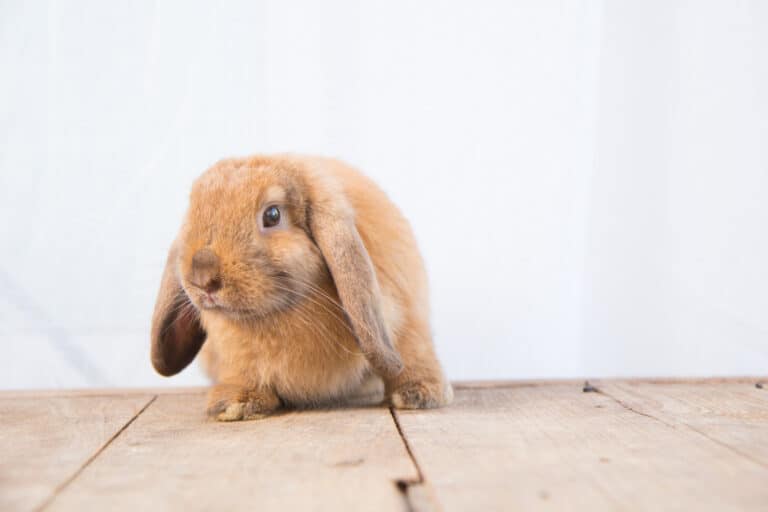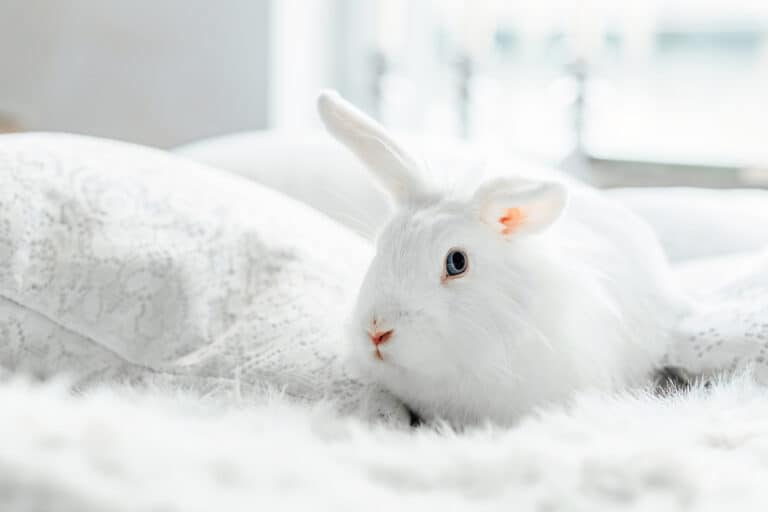Netherland Dwarf Rabbit Colors

Do you want a rabbit that looks like a baby bunny no matter how old it gets? How about getting a Netherland Dwarf Rabbit, then? This bun type belongs to the dwarf classification and is the smallest of the breeds. But don’t get fooled by its diminutive size, as it is among the feistiest of all fur babies. Aside from its tiny build, the variety of Netherland Dwarf Rabbit colors gives this bun an appeal that makes it one of the country’s popular pets.
Let’s look at the different colors of Netherland Dwarf Rabbits and also what makes them great cuddle buddies.
Background
It took 30 years of selective breeding to create the Netherland Dwarf Rabbits we know today. They came from the cross-breeding of Polish rabbits with native wild buns in the early 1900s. The result? Bunnies that are smaller than other dwarf breeds. These rabbits come in a variety of pleasing colors as well. The new breed was honed over multiple generations to create the optimal size and personality.
The cute bunnies found their way into the hearts of rabbit lovers in the Netherlands in the early 1940s and in Britain during the 1950s. After coming to US shores, the breed gained official recognition from the American Rabbit Breeders Association (ARBA) in 1969.
General Characteristics
What makes these teeny-weeny bundles of joy different from other rabbit types, like the fellow small breed rabbit, the lop or the larger Californian? Let’s dig into the details.

Physical Appearance
Netherland Dwarf Rabbits have compact, well-rounded bodies and flat brachycephalic faces. Brachycephalic means that the skull length is shorter than what is typical for their species. Their oversized head, bright, round eyes, and erect, well-furred ears make them look quite adorable.
Coat
This petite breed has a lovely coat. Short to medium in length, the fur rolls back into position when stroked in the opposite direction. It’s relatively easy to maintain, requiring only minimal grooming. Weekly brushings are enough to keep the coat in tiptop condition. You’ll only need to pay extra attention to removing the excess fur when your Netherland Dwarf Rabbit sheds.
Size and Weight
The first thing you notice with Netherland Dwarf Rabbits is their size. This bun breed is small, even for the dwarf type. Netherland Dwarf Rabbits are one of the smallest bunny breeds, weighing only between 2 to 2.5 pounds (0.9 to 1.13 kilograms). The male (buck) is often larger than the female (doe).
Netherland Dwarf Rabbit Colors
The original color of Netherland Dwarf Rabbits is pure white. But now, this bun type comes in a wealth of colors and patterns owing to generations of cross-breeding. They have been grouped into different varieties depending on the colors and shades.
- Solid colors: These include blue, black, lilac, chocolate, ruby-eyed and blue-eyed white.
- Shaded colors: Siamese sable, Siamese smoke pearl, and Sable Point and Tortoise Shell make up this classification.
- Agouti colors: The different agouti shade mixes include chestnut, lynx, chinchilla, opal, and squirrel.
- Tan patterns: The pattern types include silver, tan, otter, sable marten, and smoke pearl marten.
- Pointed white: These come in blue, black, lilac, and chocolate.
- Ticked: These come in varieties of Silver, Steel (Gold and Silver Tipped Varieties), and D’Argent (Champagne and Creme).
- Wide Band: These include red, orange, fawn, and frosted pearls (blue, black, chocolate, sable, smoke pearl, and lilac).
- Any other variety (AOV): These are Vienna Marked, Harlequin, Hotot, Dutch, Tri-colors, and broken (Normal, Charlie, and Booted).

Temperament
Netherland Dwarf Rabbits may look cute and cuddly, but they’re not toys. Because they carry the DNA of wild rabbits, they tend to be skittish. They hate loud noises and sudden movements. The same goes for being held by people they don’t know.
These buns can bite or scratch when spooked. However, after your pet has gotten used to you and his new surroundings, you can expect to see some displays of affection. Still, there might be better options if you’re looking for child friendly rabbits.
Health
Netherland Dwarf Rabbits have minimal health issues, which makes them ideal choices for bun parents who cringe at the thought of dealing with health scares. However, like other bun breeds, these tiny rabbits can develop the following medical conditions:
Malocclusion
Their size and face shape make Netherland Dwarf Rabbits prone to malocclusion. All rabbit breeds have perpetually-growing teeth, and malocclusion occurs when their upper and lower pearly whites don’t line up. This leads to uneven wearing of their teeth. In Netherland Dwarf Rabbits, the lower jaw doesn’t align with the upper jaw, so the teeth overgrow.
Respiratory Diseases
Rabbits often have small lung space. This makes respiratory infections common in all breeds. Moreover, because the roots of their upper teeth lie close to their sinuses, tooth and gum inflammations can quickly lead to sinus infections. Other issues of the respiratory system include snuffles, which is caused by the Pasteurella bacteria. Symptoms of this condition include a runny nose and sneezing in rabbits.
Parasites
All rabbit breeds can get parasites. Examples are the Cheyletiella mites that cause itching and hair loss. Another one is the E cuniculi parasite, which is more challenging to treat than Cheyletiella mites. The E cuniculi parasite can affect the kidneys and nervous system, causing paralysis or head tilt.
Lifespan
You can expect to have about 10-12 happy years with your rabbit. That’s quite a lifespan considering the Netherland Dwarf Rabbit’s minuscule size.

Caring for a Netherland Dwarf Rabbit
Your little furry pal has almost the same requirements as other rabbit breeds, although you’ll have to make some considerations regarding their size.
Diet
Like their other domesticated kin, this bun type’s meals should consist primarily of hay. This is particularly important because the teeth of Netherland Dwarf Rabbits need to be worn down; otherwise, they may suffer from malocclusion. Supplement your pet’s diet with leafy greens and other veggies. Also, offer tiny servings of fruit, such as grapes and oranges, as treats.
Grooming
Because of their coat type, this rabbit breed requires little grooming. A quick brushing once a week will suffice to keep your pet’s coat healthy. You can add more brushing sessions during molting season to eliminate the loose hair. This will help prevent your rabbit from ingesting too much hair when he grooms himself. Likewise, it will reduce the amount of fur lying around the house.
Many fur-parents find the number of Netherland Dwarf Rabbit colors pretty amazing. But the shades and patterns of their coats are not the only things that make this bun type appealing. Netherland Dwarf Rabbits may be small in size, but they’re big in personality, which can add joy to your household.
We hope you enjoyed this post! If you did, will you give it a share or two 🙂 Thank you! ~from Every Bunny Welcome







